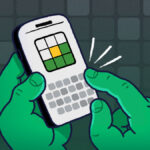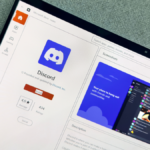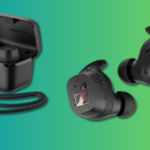T-Mobile Opens Beta Access to Starlink Across the U.S.
T-Mobile is extending an invitation for beta participation in the Starlink service to eligible individuals across the United States.
Here’s the latest update: In December, T-Mobile unveiled its collaboration with SpaceX to provide Starlink connectivity. Just last month, the initial phase of user sign-ups began, but it was limited to recent Samsung device owners.
However, a shift occurred after the release of iOS 18.3. It appears that Apple collaborated with SpaceX and T-Mobile to introduce integration for Starlink on iPhones, although this partnership wasn’t formally acknowledged in the update. Additionally, T-Mobile began accepting registrations from select Pixel 9 users as well, thus widening the beta eligibility to devices from Apple, Samsung, and Google.
On Super Bowl Sunday, T-Mobile announced that its Starlink beta is now accessible to all U.S. residents, inclusive of Verizon and AT&T customers. While limitations still apply, those interested in testing T-Mobile’s satellite features can now register, regardless of their current carrier.
How to Enroll in the T-Mobile Starlink Beta
If you are keen to participate in T-Mobile’s Starlink beta, the first step is to ensure you possess a compatible device. A complete list of devices that can participate can be found on T-Mobile’s official Starlink page, which includes:
Apple Devices
- iPhone 14
- iPhone 14 Plus
- iPhone 14 Pro
- iPhone 14 Pro Max
- iPhone 15
- iPhone 15 Plus
- iPhone 15 Pro
- iPhone 15 Pro Max
- iPhone 16
- iPhone 16 Plus
- iPhone 16 Pro
- iPhone 16 Pro Max
Google Devices
- Pixel 9
- Pixel 9 Pro
- Pixel 9 Pro XL
- Pixel 9 Pro Fold
Motorola Devices
- Motorola razr (2024)
- Motorola edge (2024)
- moto g stylus 5G (2024)
- moto g power 5G (2024)
- moto g 5G (2024)
Samsung Devices
- Galaxy A14
- Galaxy A15
- Galaxy A16
- Galaxy A35
- Galaxy A53
- Galaxy A54
- Galaxy S21 FE
- Galaxy S21, Plus & Ultra
- Galaxy S22, Plus & Ultra
- Galaxy S23, Plus & Ultra
- Galaxy S23 Fan Edition
- Galaxy S24
- Galaxy S24+
- Galaxy S24 Ultra
- Galaxy S24 Fan Edition
- Galaxy S25
- Galaxy S25+
- Galaxy S25 Ultra
- Galaxy S25+ SE
- Galaxy Z Flip3
- Galaxy Z Fold3
- Galaxy Z Flip4
- Galaxy Z Fold4
- Galaxy Z Flip5
- Galaxy Z Fold5
- Galaxy X Cover6 Pro
- Galaxy Z Flip6
- Galaxy Z Fold6
T-Mobile Devices
- T-Mobile REVL 7 5G
- T-Mobile REVL 7 Pro 5G
Next, visit T-Mobile’s Starlink page, and click “Register now” or scroll to the registration section. You will need to provide your first and last name, email address, and phone number. Keep in mind that individuals from any carrier can request access to the beta, so those without T-Mobile should not feel discouraged. Note that spots are limited and entry is not assured.
The service is projected to begin charging fees in July. However, those who join the beta before this date will have the opportunity to experience it at no cost.
Why Satellite Connectivity Matters
Connecting smartphones directly to satellites represents a fundamental shift in how users experience mobile connectivity. This innovation eliminates concerns about losing cell service or the reliance on Wi-Fi networks. As long as there is an unobstructed view of the sky and users are within the specified coverage area, individuals can communicate with the outside world.
It’s important to understand that this satellite feature activates in the absence of cellular service. In such situations, your device will automatically switch to connect with available satellites. Manual connection options will not be available when cellular networks are accessible.
Currently, T-Mobile’s Starlink beta supports text messaging and location sharing. The company is diligently working to introduce voice and data service next, and according to Elon Musk, existing Starlink technology should enable medium-resolution image transmission, as well as music and podcast streaming. Although the current capabilities are somewhat limited, the basic ability to send text messages can be invaluable in emergencies, allowing users to connect with critical services or contacts when conventional service is unavailable.
Importantly, this is not the first instance of smartphone satellite connections. Apple introduced satellite connectivity with the iPhone 14 in 2022, featuring “Emergency SOS via satellite.” The function was enhanced with iOS 18, allowing users to send messages to any contact—previously, it was limited to emergency services and roadside assistance only.
For the past two and a half years, Apple collaborated exclusively with Globalstar Inc. for satellite services. However, with the T-Mobile beta program, iPhone users will automatically connect to SpaceX’s satellites, while still having the option to link to Apple’s own satellite services if they desire. Notably, while Apple’s service requires users to align their device towards the sky to find the nearest satellite, the Starlink connection should establish automatically.












